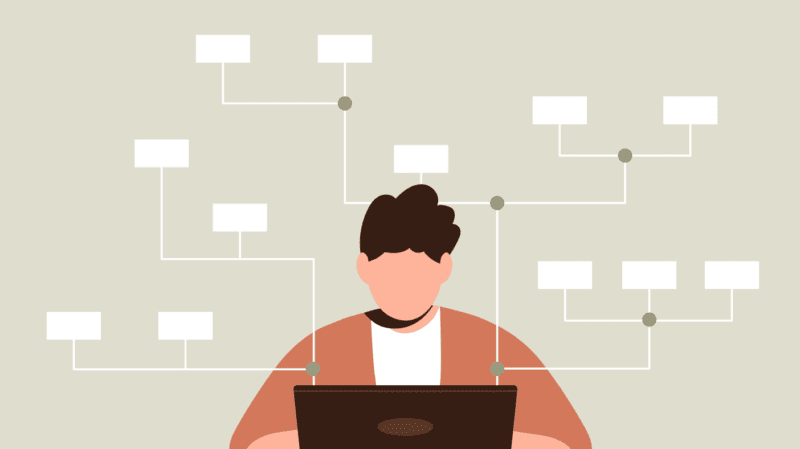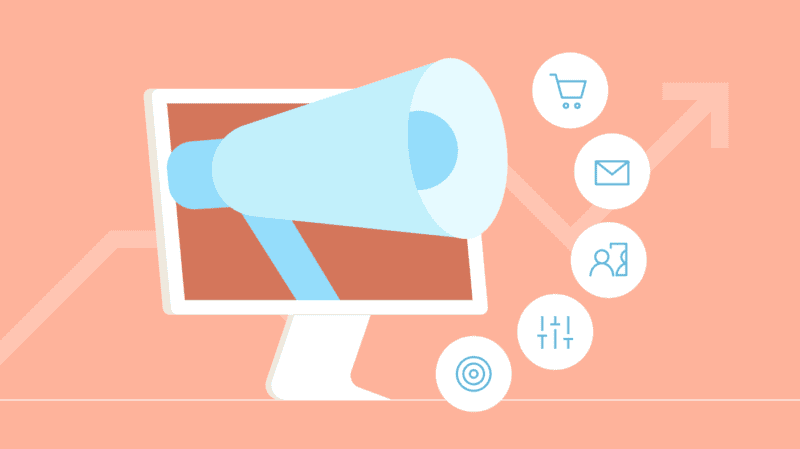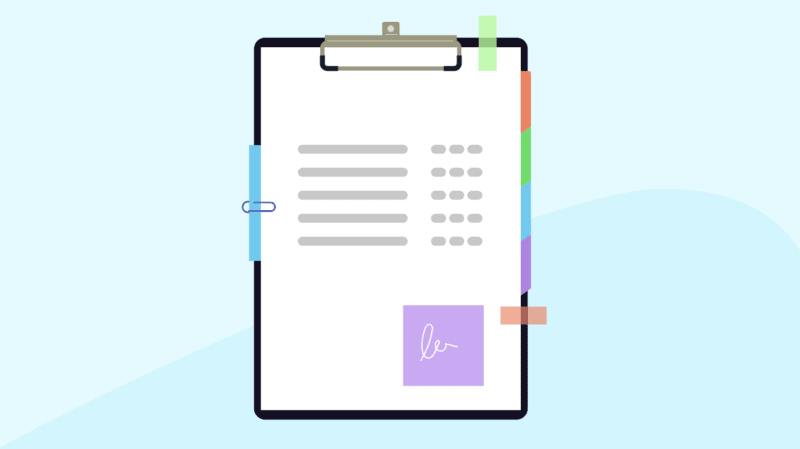Behavioral Segmentation (And Why It’s So Important)

If you read our blog post “What is Customer Segmentation?,” you learned that market segmentation is a technique where existing customers are split into groups based on similar attributes or affinities. It covered a range of methodologies for market segmentation including demographic segmentation, firmographic segmentation, psychographic segmentation, needs-based segmentation and more.
But one marketing strategy in particular, behavioral segmentation, is so powerful, so interesting and so seemingly difficult to achieve (even though it’s not!) that it merits drilling down a little deeper.
What is Behavioral Segmentation?
Behavioral segmentation, or behavioral targeting, is a segmentation strategy that identifies consumers based on what they do. A behavioral segment is not focused on what they do for a living, but rather the behavioral pattern of actions they take in their daily lives. The key consumer behavior that is especially important to look at is how they directly interact with your brand or in the proximity of your brand (e.g., you offer insurance and the consumer is educating themselves on how auto insurance works using Google). Behavioral segmentation in marketing requires a marketer to pay attention to customer behavior, such as the purchasing behavior of an existing customer or the behavior patterns of a target audience, to alter a brand’s marketing message, increase brand loyalty and solidify customer retention.
For instance, marketers may observe the customer experience and interactions with the brand, product or service, including:
- How customers use the product or service
- The customer’s knowledge of the brand or offering
- The customer’s attitude toward the brand
In digital marketing, marketers would observe the customer’s behavior patterns on the website, such as:
- The amount of time spent on given pages
- Time spent before leaving the site
- Identifying previous purchases and behavior by existing customers
How is Behavioral Marketing Different?
Behavioral market segmentation differs from demographic segmentation and geographic segmentation because it’s less concerned with someone’s age, how much they earn or in which zip code they reside. It differs from psychographic segmentation because it’s not concerned with their personality, values, opinions, attitudes or lifestyles.
Rather, behavioral segmentation in marketing looks at an individual’s actions. A marketer must look at the customer behavior or customer journey of their brand’s target audience. What consumer behavior has been exhibited historically? What are they doing on my website or app recently, or even at this very moment? And what does it say about how we can best serve their needs to make them a potential customer?
Why Behavioral Segmentation in Marketing is Important
It’s crucial to learn the buyer persona of your target market to find the optimal consumer base or market segment to sell your brand. People’s demographics don’t change very often. For example, people move homes on average about every five years. Also, people’s personalities, values and opinions don’t change often either. But what people want and what they need changes all the time and behavioral marketing can help explain different customers and their purchasing behavior.
Why, as a marketer, does it make sense to rely solely on static segmentation techniques like demographic segmentation and psychographic segmentation in a world where consumers’ preferences and desires are constantly in flux? Answer: It doesn’t. It only made sense when those techniques were the only ones available to us.
But nowadays, with all the customer data our enterprises have been collecting for years about buying behavior, customer loyalty, customer engagement, audience segmentation and all the different touchpoints across which customers interact with us in real time — generating rich historical and in-the-moment first-party data — powerful behavioral marketing segmentation is now a possibility. In fact, it’s a competitive necessity for companies striving to succeed in the modern customer-centric economy.
Using behavioral segmentation techniques, marketers and customer experience (CX) professionals can tailor their marketing strategies by identifying what their target audiences want and need today, giving them an unprecedented ability to personalize customer experiences that are helpful, unique and drive deep brand loyalty for a particular behavioral segment. By leveraging these behavioral segments, combined with other comprehensive data synthesized by customer data platforms, marketers can create effective customer segments through advanced technical analyses, such as RFM analysis, to inform their marketing campaigns. Marketers are able to alter their marketing strategy or marketing campaign based on consumer behavior to offer their target audience or existing customers the best possible experience, ultimately increasing customer retention. In the same blog post about customer segmentation referenced at the beginning of this post, we talk about how (with the help of AI and machine learning) the lines between segmentation and 1:1 personalization are blurring, and that this is changing the way customer experiences are delivered. Behavioral segmentation is at the heart of that capability.
Techniques for Executing Behavioral Segmentation
When marketers build customer segments, they typically use attributes about the customer to create those segments. For instance, with traditional demographic segmentation, you might generate an email marketing list including all customers aged 29-35 who live in high-income neighborhoods in Georgia. The attributes in this case are age, income and location.
For behavioral segmentation, a whole different set of very powerful attributes is available for creating customer segments:
- Purchasing behavior examines the actions customers take along the way to purchase and identifies behaviors that are drivers of a future purchase. Common buying behavior signals that inform this type of marketing segmentation include past customer transactions as well as behaviors along the path to purchase (e.g., do they first search on Google, research on the website, then buy in the store?)
- Occasion-based behavior uses holidays, seasonal events and scheduled events (like concerts or NFL games) or personal events and routines (like birthdays or eating out every Saturday night) to predict the likelihood of a future purchase.
- Usage behavior looks at how often a consumer purchases products, consumes content, logs into online software and so on to predict propensity to purchase, increase spend or churn.
- Purchase behavior takes into account the fact that different customers seeking the same product may have very different reasons for doing so. I may be looking to buy a car that’s fast. You may be looking to buy a car that’s safe. We’re both in the market for a car but for very different reasons — we should be segmented separately, receiving completely different messages aligned to our interests.
- Consumer status looks at the state of a consumer’s relationship with your brand to segment them appropriately. For instance, an internet service provider might classify consumers as non-subscribers, prospects, new subscribers, longtime subscribers, churn risks and churned customers (who have switched to a different provider). How you message and present offers will vary based on the segment ( i.e., you’ll send “win-back” offers to churned customers, but that same offer wouldn’t make sense for prospects).
- Customer journey stage looks at where the consumer stands in terms of the customer journey, whether they’re in the awareness stage, consideration stage, purchase stage, retention stage or loyalty stage. By segmenting the customer journey stage, marketers are able to analyze weaknesses and strengths in the customer experience. For example, due to a lack of blog content and reviews, an offering could lack enough credibility for consumers to move from the awareness stage to the consideration and purchase stage.
- Customer loyalty is valuable to any business. Making sure loyal customers spend time engaging with the brand is important to generate consistent revenue. This loyalty segmentation strategy is built to maximize customer lifetime value and ensure customer satisfaction. Along with the benefits of having a steady source of revenue, loyal customers are invaluable to word-of-mouth referral and feedback.
Data is at the Foundation of Behavioral Segmentation
As we’ve discussed, a behavioral segmentation strategy is very powerful to you as a marketer and can give your brand a distinct competitive advantage to its marketing campaigns. But turning its techniques into reality can be challenging because it requires a level of mastery over your customer data that many organizations have not yet achieved.
To overcome that hurdle, many marketers are turning to customer data platforms (CDPs) to:
- Unify customer data from every channel and touchpoint, whether online or offline, into a single view.
- Analyze customer behavior to enable behavioral segmentation executed by business users with the help of AI and machine learning.
- Activate those segments in the form of personalized, relevant and timely experiences.
Taking the Next Steps with Behavioral Segmentation
There are a variety of ways to build out a behavior segmentation strategy. Many companies, such as social media platforms like TikTok and Facebook, have developed a strong behavior segmentation strategy utilizing data and algorithms to increase consumer engagement and customer satisfaction with the platform. By creating personalized customer experiences through the segmentation of consumer data, gaining insight on behavioral patterns, brands are better equipped to create a competitive advantage against their competitors.
Reach out to our CDP experts to learn more about behavioral segmentation techniques to help your business’s marketing efforts drive deeper customer loyalty and brand loyalty, deliver superior customer experiences and generate incremental revenue, we’d love to talk with you about how to turn it into reality.





